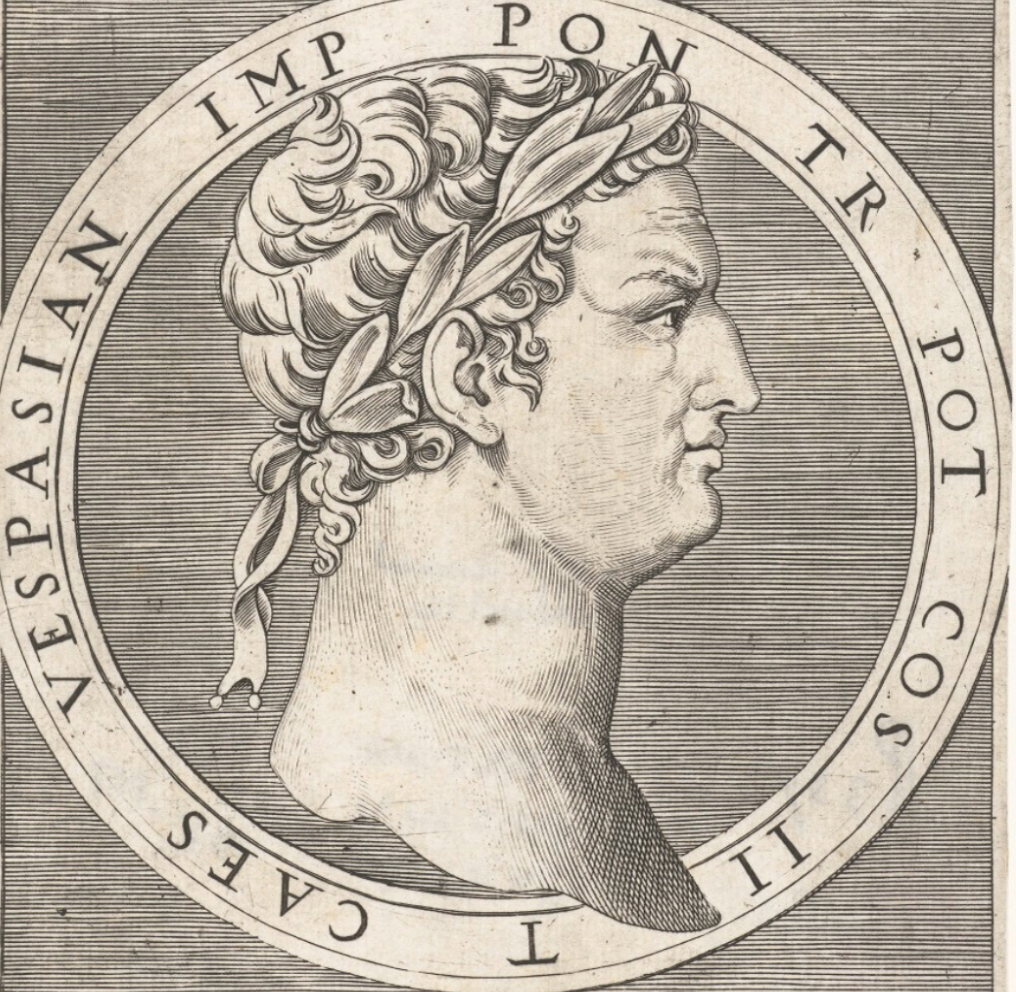Head Adornments in the Roman Empire:
Roman coinage played a large in everyday Roman life and provide lots of insight into the Roman history and culture. A common theme shared among this collection of Ancient Roman coins is the display of head adornments. Head adornments have been a symbol of royal dignity for centuries. There are a variety of Roman head decorations such as Corona Radiatas, Diadems, Pearl Diadems, Laurel Wreaths, and Helmets. Each of these head decorations hold their own cultural and traditional significance. These adornments were adopted by the Romans from the Greeks and the Spartans, especially the Wreaths.Prior to the establishment of the role of emperor, the Roman people had a strong disdain for monarchies after the Etruscan monarchy was overthrown and the Republic was established. Rome's wealthiest families slowly began to creep into power as the patricians, holding political and religious positions. The leading power was originally the Senate, lasting only from the Republics founding in 509 BCE until 494 BCE. Swiftly following this was the appointing of two consuls that were elected by the legislative assemblies. They ruled for only one year and they had relatively limited power. However, as the empire expanded and became more powerful the Republic became uneasy leading to Julius Caesar coming into power and becoming the first emperor.
Initially emperors were cautious of using any terminology or attire that would connect them to the widely hated Etruscan monarchy, dressing as senators and wearing no head adornments. Rome still wanted to retain the idea of a Republic that represented the people even though they had an emperor. As emperors gained more power their attire began to reflect their position and head adornments were reintroduced as wreaths. These head adornments evolved substantially over the course of the Roman Empire, as emperors gained more power and prevalence in the Empire. The message and political agenda behind these is as important as the coins' value in currency. Most of the Roman public were illiterate, so the Roman leadership depended on images to spread their political propaganda. What better way to do this than to place propagandistic imagery on an object that is constantly being transferred from citizen to citizen? These coins pushed propaganda through establishing the power of both the Roman emperor and military, rallying public support. The military played a large role in Roman society because it was so closely tied to the government as the Roman Empire was constantly expanding and conquering new lands. The military became so intertwined that all the attire of Roman senators, other wealthy members of society, and emperors were based on military uniform. Emperors began to focus on establishing military excellence and to document their achievements and agenda through propaganda.
These coins also represent centuries of Roman tradition and pride. Religion played a large role in Roman culture and is present in a lot of Roman art as well as these coins. Many gods are depicted on these coins such as Sol, Roma, Athena, and Victory. The head adornments are directly linked to religion as they represent a connection to the divine. As emperors were seen more divine and less like regular senators the adornments became representative of that change, becoming more definitive in the hierarchy.
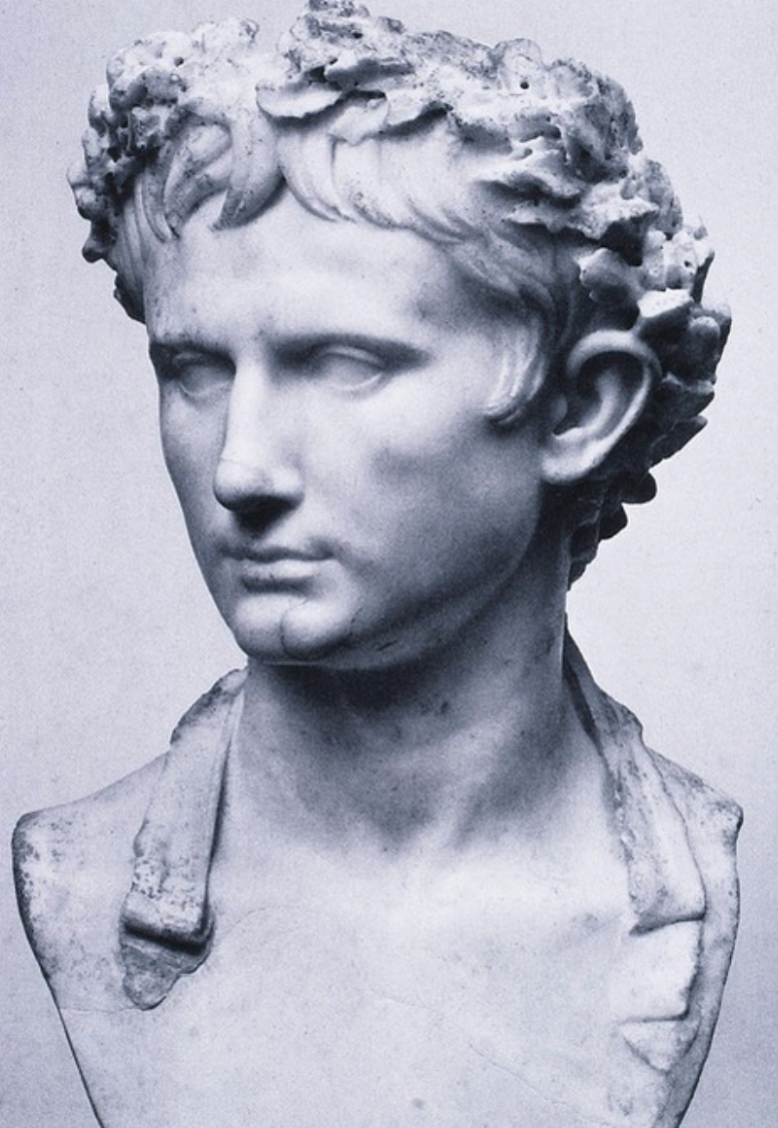
Crowns/Wreath--Civic
Portrait busts--Imperial
Portrait busts--Roman
Sculpture--Roman: Julio-Claudian--27 B.C-69 A.D
DIADEM:
A Diadem is a decorated ribbon tied around the head of as a symbol of royal dignity and power, serving as the first crown. Diadems held a long existence in history before being a staple of Roman head adornments. Diadems were present in Greece (especially in Macedonia), Persia, Egypt, and many other countries. They were not only used by emperors but also used in Antiquity by athletes and took the form of ribbons that tied in the back and two strips draping over the shoulders.
Diadems were reintroduced by Julius Caesar but the Roman Republic initially rejected it and were unsettled by the great display of sole power because of the previous overthrown monarchy of King Tarquinius Superbus. Julius Caesar adopted the diadem as a symbol of his right to rule, but due to the negative response by the public resulted in the adoption of the laurel wreath instead. Diadems were not used in the early Roman Empire, the Emperor always displayed himself as a common senator and only during religious festivals did he wear a laurel wreath. In the 4th century diadems became more frequently used by emperors and wealthy leaders. They evolved to be decorated with diamonds and pearls to show off imperial power. Some of the most well known emperors to wear these head adornments were Tiberius, Caligula, and Claudius in their portraits on Roman coins and in Roman art.
The coin displayed below shows Emperor Arcadius. There is also a depiction of a wreath, which is being held above his head. During the Triumph (peak of military prestige and honor) military leaders would be lead on a chariot and have a wreath held over their heads, being reminded “Memento mori” which is translated “Remember that you are mortal”. These wreaths would be too large, reminding the wearer that they are not as divine as the gods and to remind them of their status.
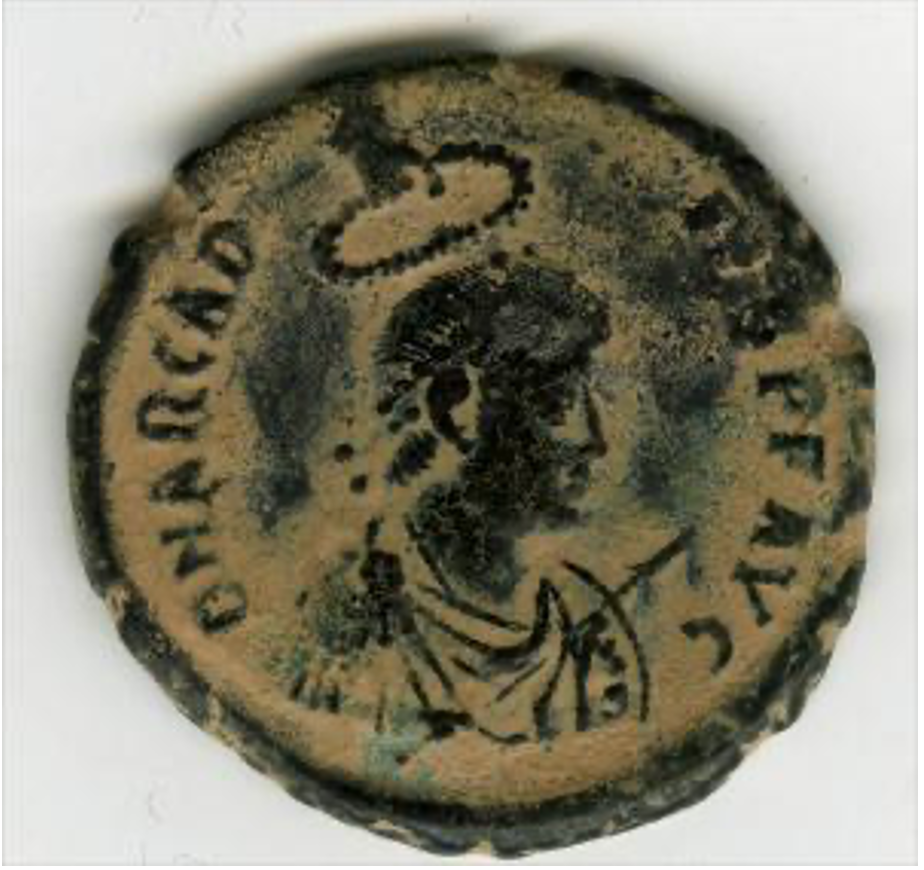
Obverse
This Copper coin depicts a portrait of Emperor Arcadius's cuirassed bust draped and wearing a diadem. A hand hovers above his head, holding a wreath. It is inscribed with "ARCAD(IVS) AVG(VSTVS)", translating to "Arcadius Augustus".
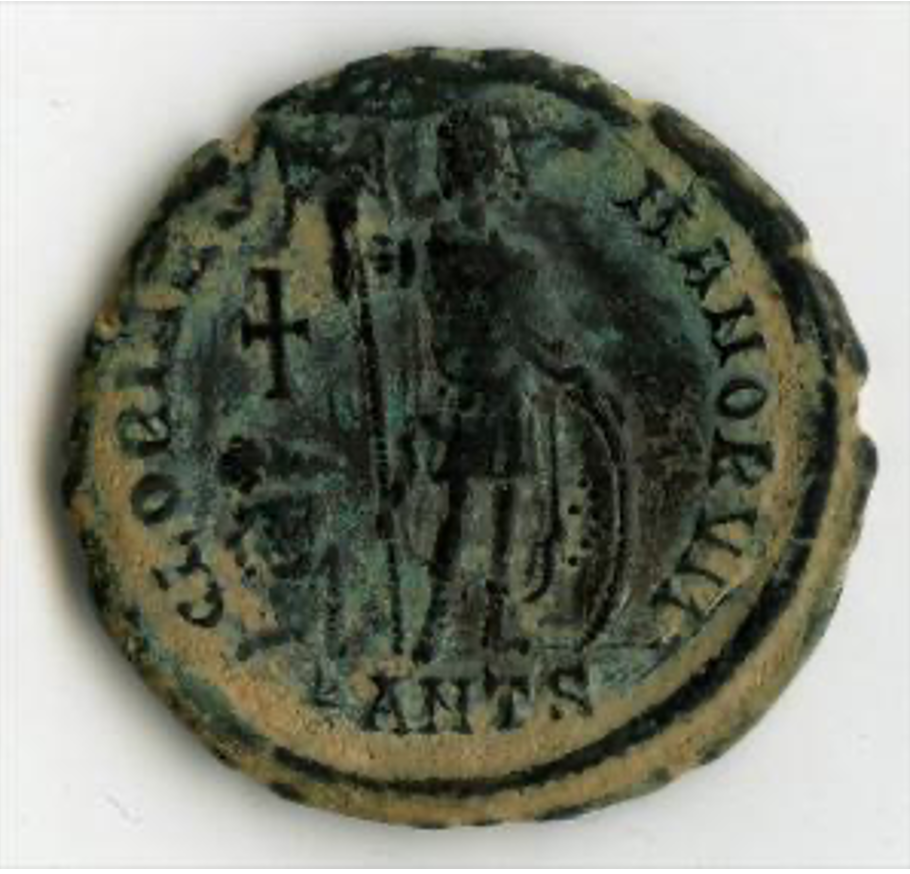
Reverse
Copper coin depicting Emperor Arcadius standing and facing left. H is holding a standard and leaning on a shield. At his feet to the left is a captive. It is inscribed with "GLORIA ROMANORVM", translating to "Glory of the Romans".
WREATH:
Wreaths were used as a way to portray Roman military excellence and were only used in ceremony. Despite these coins only exhibiting Emperors wearing laurel wreaths, they were not the only ones to wear wreaths. Military commanders who had success in their military endeavors were awarded wreaths in ceremony.
There are many different types of wreaths used for varying purposes. The Corona Triumphalis was made with laurel or bay leaves and was one of the most honorable award and the ambition of all Roman generals. Most of the time they were made out of material acquired during the conquest. There were also wreaths made for ovations called Corona Ovalis, slightly inferior to the triumphal wreath and awarded for minor victories. Wreaths awarded as Emblems were used solely for special occasions, the Corona Sacerdotalis was used by priests during sacrifices and made of olive leaves as an emblem of peace. There are many more wreaths used for marriage, birth, and private parties. The wreaths included on some of these coins provides insight into how important and prevalent wreaths were in Roman culture and art.
The coin displayed below depicts Emperor Trajan, one of the more fondly remembered soldier emperors. He lead one of the most successful military expansions in Roman history. He guided the Roman Empire through prosperity throughout his long reign, 98-117 CE. On of his greatest military feats was his conquest of Dacia during the Dacian wars. He earned lots of military recognition as seen in his head adornment of a wreath. After his death in 117 CE he was deified by the senate, becoming known as a god.
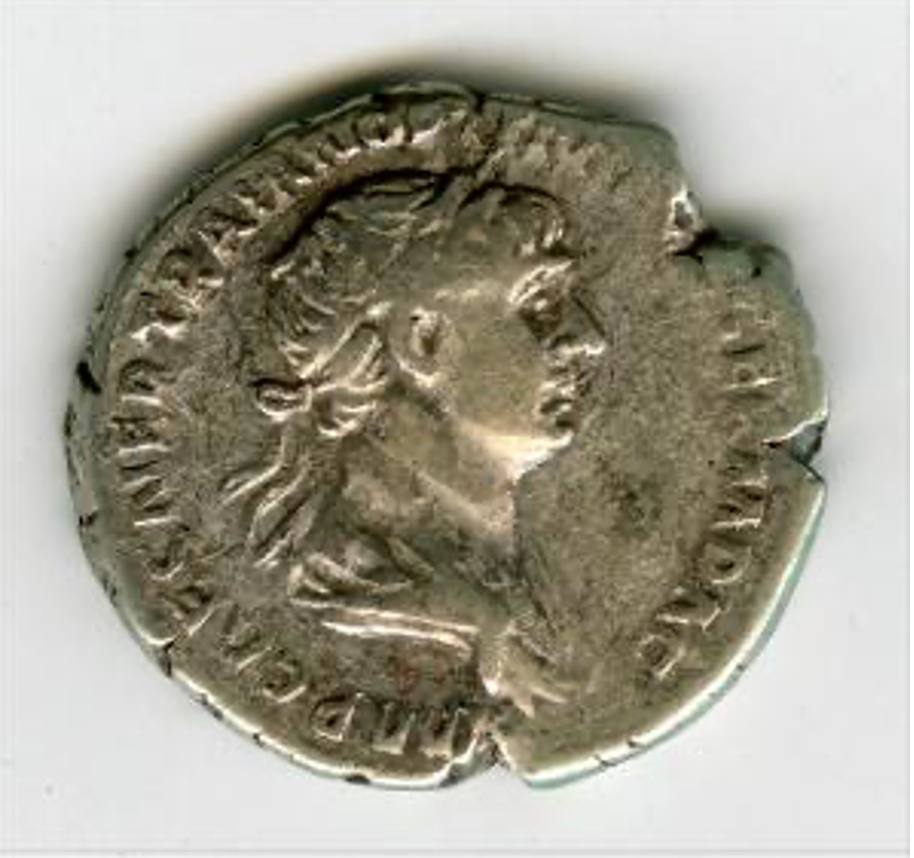
Obverse
This Denarius made of silver depicts the bust of Roman emperor Trajan facing right and wearing a wreath. It is inscribed with "IMP CAES NER TRAIAN OPTIM AVG GERM DAC".
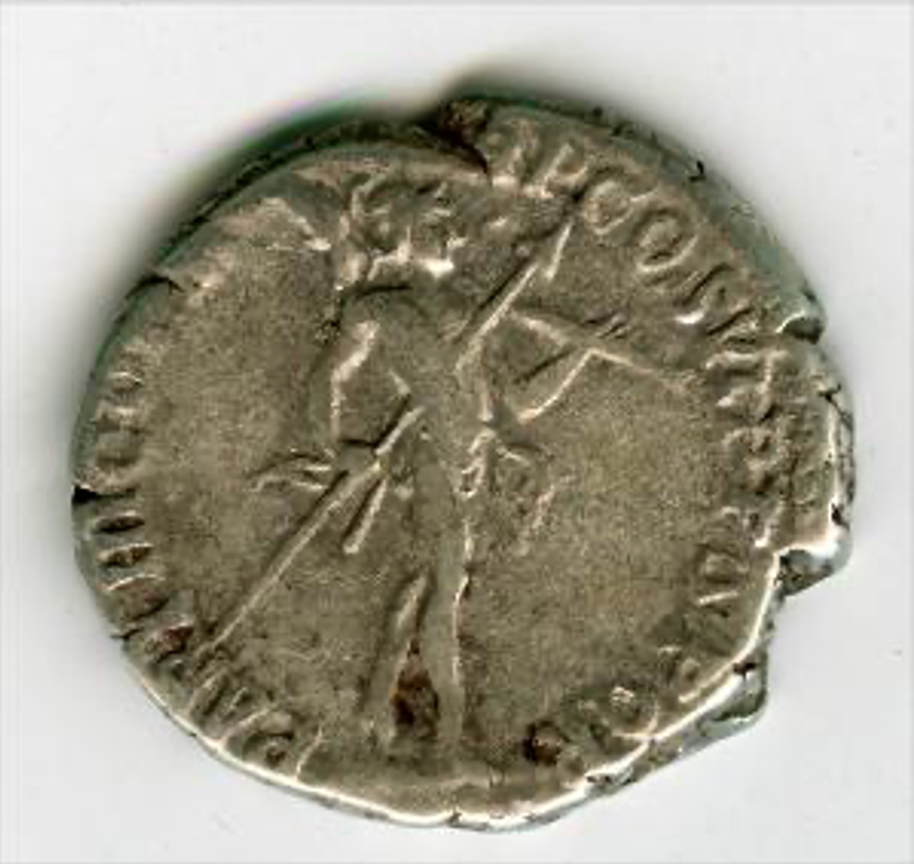
Reverse side
This Denarius made of silver portrays the god Mars walking. He is wearing a helmet and is in the nude with a cloak over his shoulders. He is holding a spear in his right hand and a trophy in his left hand.
Pearl DIADEM:
The Pearl Diadem was developed and widely used in the 4th century in coins and Roman art. In Roman culture pearls symbolized wealth, luxury, and rarity. They were an evolution from the original Diadem, a simple ribbon, and were a sign of dignity and elite status. Portraying emperors wearing these diadems was very popular as pearls became popular in Roman society.
In the coin displayed below, a profile of Emperor Arcadius is depicted wearing a pearl diadem. Arcadius ruled from 395-408 CE and was one of the most ineffective emperors. He originally ruled with his father, Theodosius I, from 383 to 395 CE. He was apparently controlled by his ministers Rufinus, Eutropius, Anthemius and his wife Eudoxia. Because of his ineffective rule the empire was constantly attacked by the Goths. Arcadius was a very wealthy Roman elite, hence why he chose to be portrayed with a diadem displaying wealth and dignity.
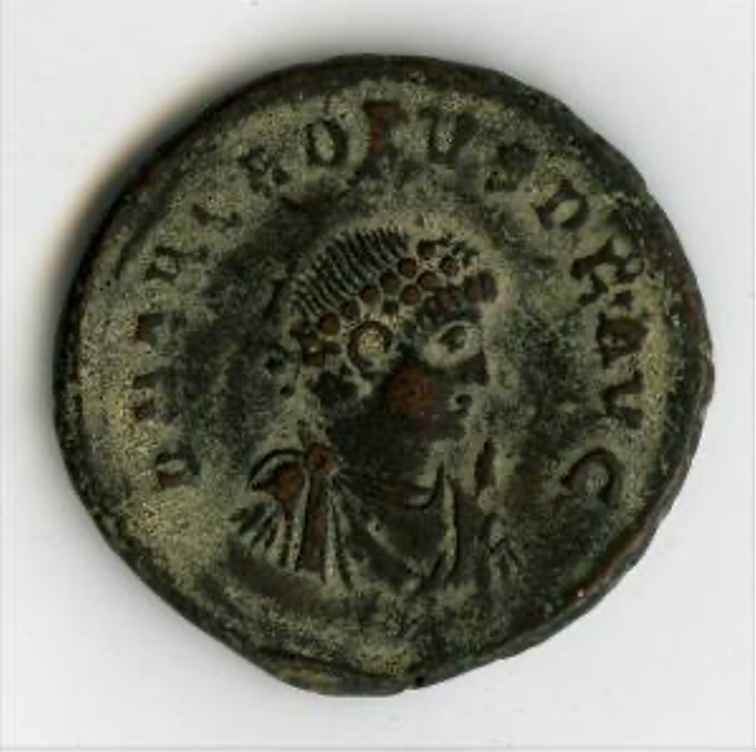
Obverse side
Copper coin depicting a portrait of Emperor Arcadius with a pearl diadem and cuirrassed bust facing to the right. It is inscribed with "DN ARCADIVS PF AVG", translating to "power performance".
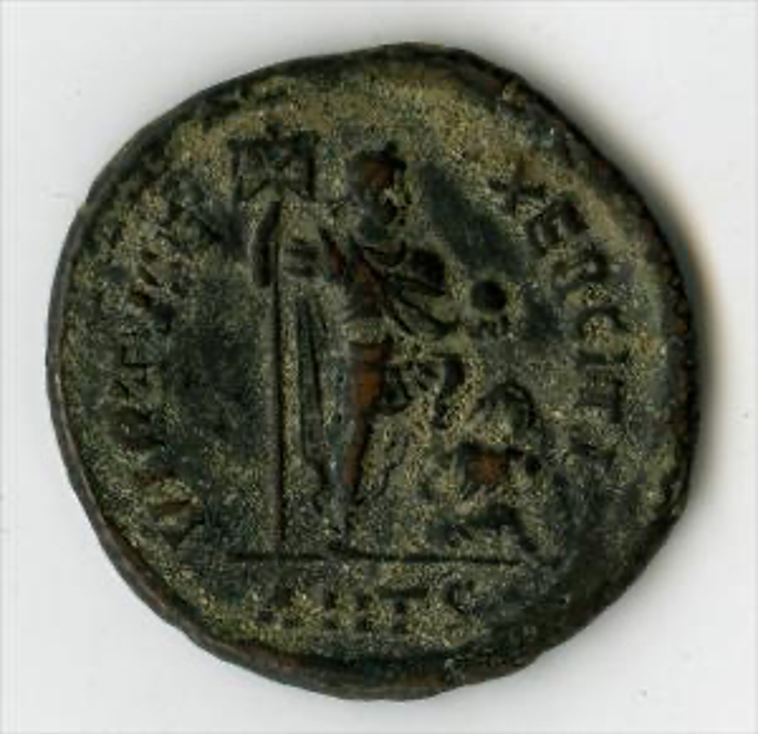
Reverse
Copper coin depicting Arcadius standing facing his head to the left and holding a standard and glob, leaning on a shield. He is also holding his captive down with his left foot, displaying his superiority in conquest. It is inscribed with "VIRTVS EXERCITI", translating to "Bravery of the Army".
HELMET:
The Roman helmet was the most essential piece of military equipment for soldiers. The depiction of helmets on Roman coins emphasizes military excellence and was designated to the most revered military leaders. The use of helmets and other weapons in imagery, highlight just how large of a role the military played in Roman leadership and society. These coins were manufactured for the sole purpose of pushing military propaganda, emphasizing the importance of Rome's expansion, and to instill military pride through expressing achievements. Being apart of the military was one of the most admired and sought after positions in the Roman Empire, especially during this time period. Portraying an emperor wearing a helmet was a very unusual occurrence in the early centuries of the Roman Empire; however, it became increasingly more common as the military gained more influence in leadership.
The coin displayed below depict the profile of Emperor Licinius, rival to Constantine who reigned in Gaul and Britain. Licinius ruled Pannonia and was known for being a great military leader and for his swift advancement to the rank of Augustus. He built up the Roman army and accumulate a very large reserve of treasure through military conquests. He was the epitome of a successful Roman military leader, hence why he is depicted as such in the following coin. Licinius ruled from 308 CE until he was defeated by Constantine and executed in Thessaloncia in 324 CE.
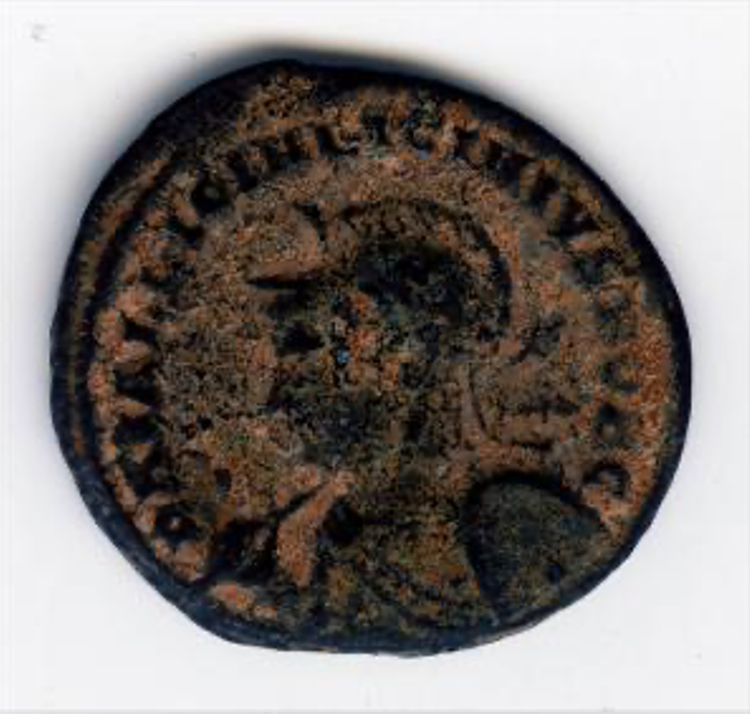
Obverse side
A copper coin depicting a helmeted Licinius II facing towards the left and holding a spear and shield. It is inscribed with "D N VAL LICIN LICINIVS NOB C", translating to "Lord Grandson Valerius Licinianus Licinius Nobel Consul".

Reverse side
Copper coin depicting the god Jupiter standing to the left between an eagle and a captive. It is inscribed with "IOVI CONSERVATORI", translating to "Jupiter Preserver".
CORONA RADIATA:
These crowns were only awarded to Deified emperors, heroes, and the gods. This was to show the defied status of the Roman Emperor on coins, to promote their leadership and power in the Roman Empire. The word “Corona Radiata” is translated to mean "Radiant Crown". This crown was inspired by Sol, also known as Helios, the sun god. Its defining characteristics are its spiky lances that shoot towards the heavens like sun rays. Referencing Sol establishes the divinity of the emperor and emphasizes that they are protected by Sol power to ward off possible enemies. These crowns were not used or depicted until Late Antiquity, when emperors were no longer viewed as real people but as the divine. They started to appear on coins around the mid-third century CE; however, they began to disappear after the pearly diadem became more popular. This model inspired the middle age crowns of monarchs that are most commonly known today.
In the coin on display below depict Emperor Gallienus. Gallienus was very successful in his military campaigns against the Goths and Germanic tribes. However, towards the end of his reign he was murdered by his senior officers and replaced by Claudius II. These coins were manufactured during his reign from 253-268 CE, to gain support in his leadership and to depict him as divine.
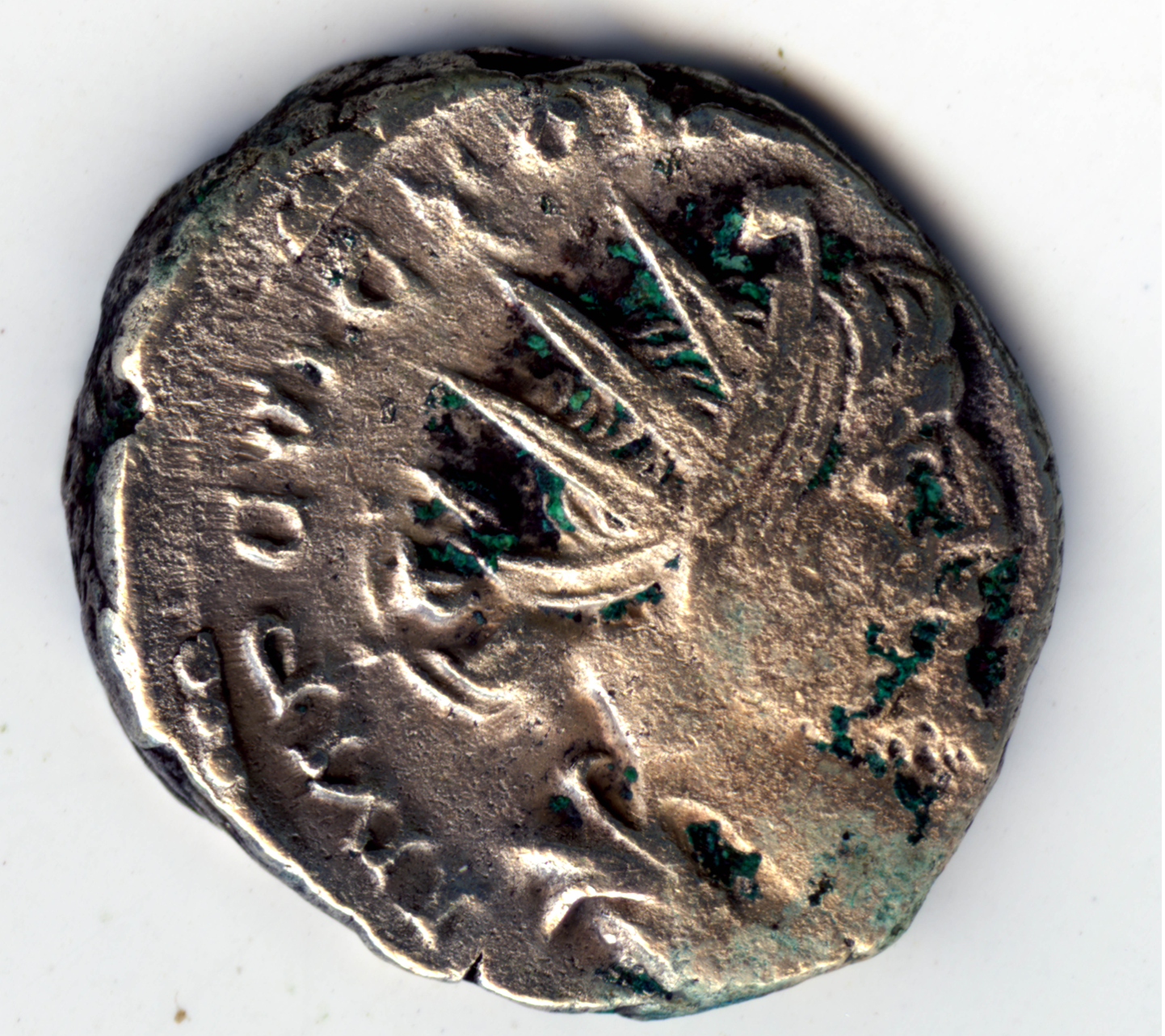
Obverse side
Depicts the draped bust of Emperor Gallienus wearing the Corona Radiatas facing right. It is inscribed with "GALLIENVS AVG", translating to "Gallienus the revered ruler". Gallienus's crown alludes to his ties to the divine as he was deified after his death in 268 CE.
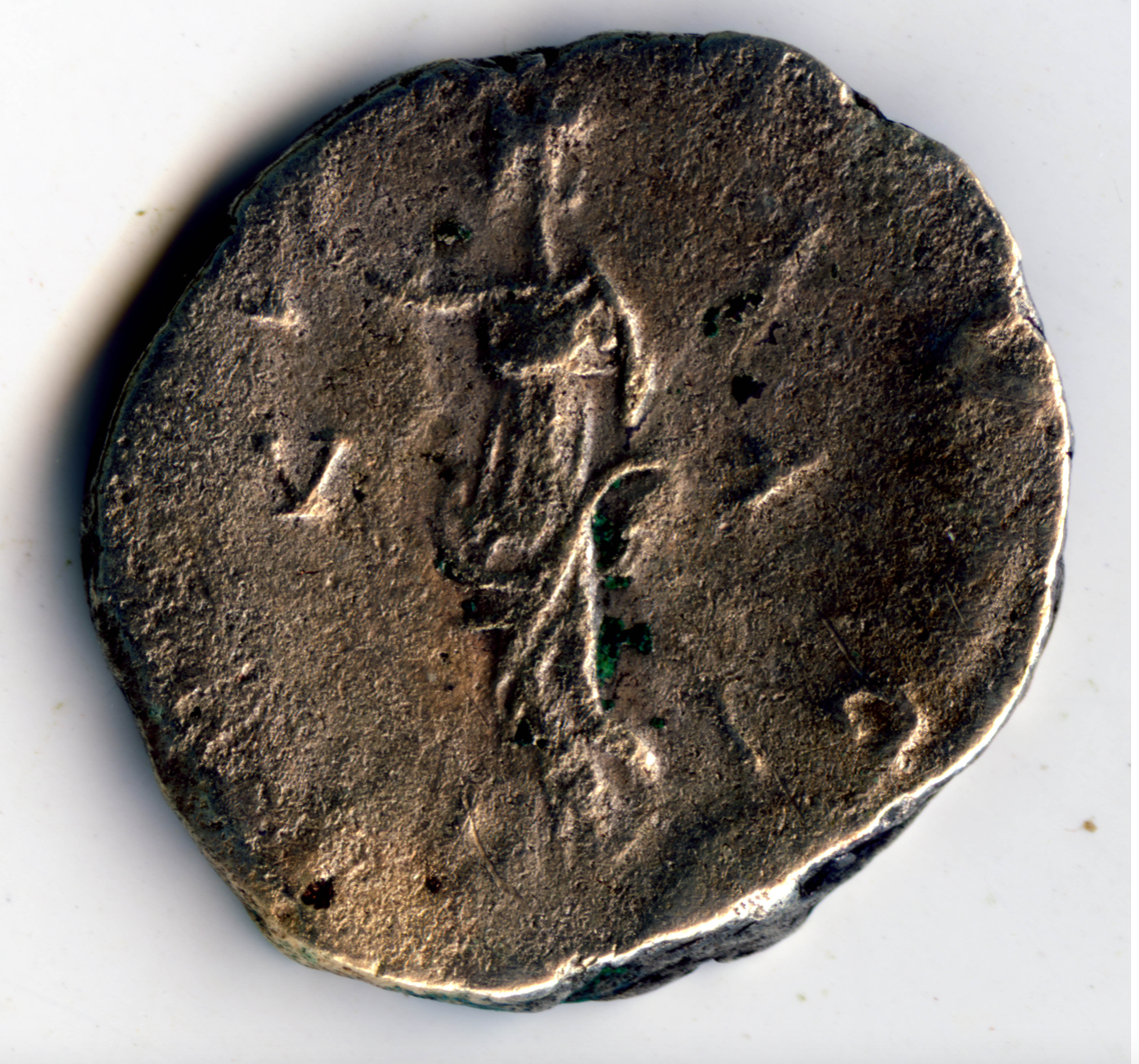
Reverse side
Depicts the god, Sol Invictus, standing towards the left holding a globe. The depiction of Sol is a reference to the divinity of Gallienus because he is wearing a Corona Radiatas .
BARE HEAD:
In some coins there are no head adornments. Emphasizing youth and reference how emperors previously wished to be viewed, like common senators. Showing an emperor without any head decorations could be a way to establish him as more relatable to the be public or sometimes to express their lack of achievements.
Emperor Geta, depicted in the coin below, died in 211 CE at a very young age. Therefore, many of his imagery do not contain wreath because he had not achieved any substantial feats which would have allowed him to be honored. Depicting him with curly full hair and without any head adornments highlights his youth and underachievement. This makes him seem more relatable to the public and not godlike. This shows just how important head adornments were to establish an emperor's status and achievements in imagery.
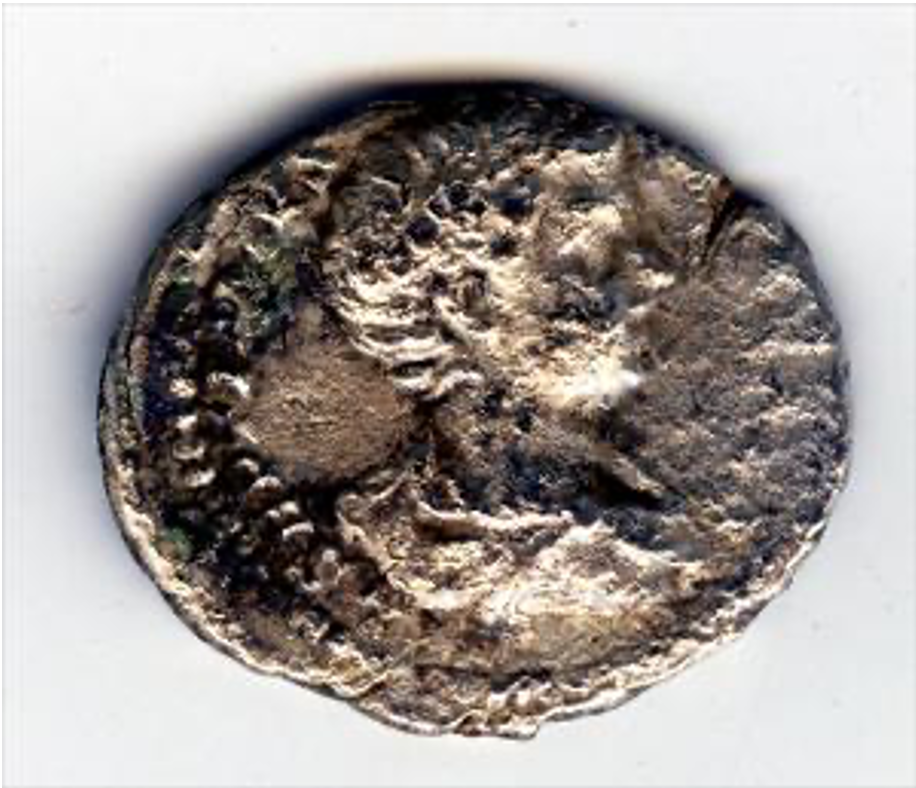
Obverse side
Depicts a young bare-headed draped bust of Emperor Geta, with his profile facing the right. This is a silver ocular coin and displays the inscription "L SEPTIMIVS GETA CAES". Geta was murdered at the young age of 22 by his own older brother, Caracalla, over disputes of their co-emperor leadership.
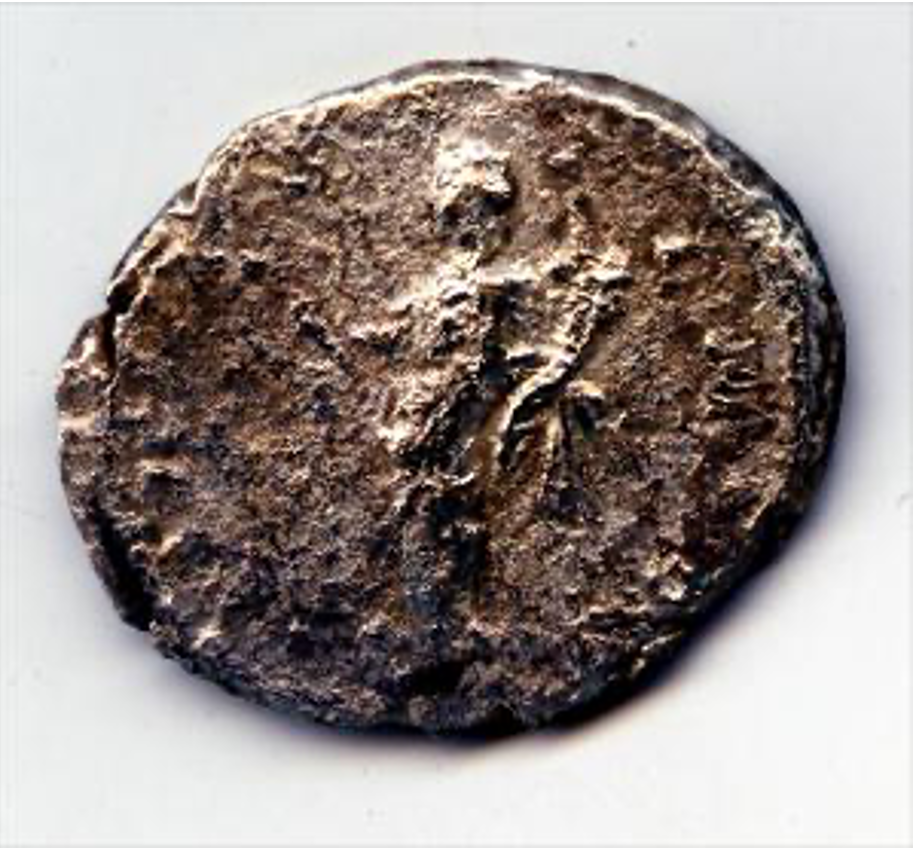
Reverse side
Depicts the goddess Felicitas standing towards the left, holding a cornucopia and a short caduceus. Ironically Felicitas is the goddess of joy, success, and good luck.
MODERN DAY INFLUENCE:
The evolution Roman headdresses and adornments in these coins and in Roman art was the inspiration and very foundation for the design of the crowns of the Middle Ages. Those traditional crowns were used by monarchies throughout many countries and cultures such as England, Spain, and France. The Roman Empire established the long standing tradition and symbolism of crowns in modern day culture.
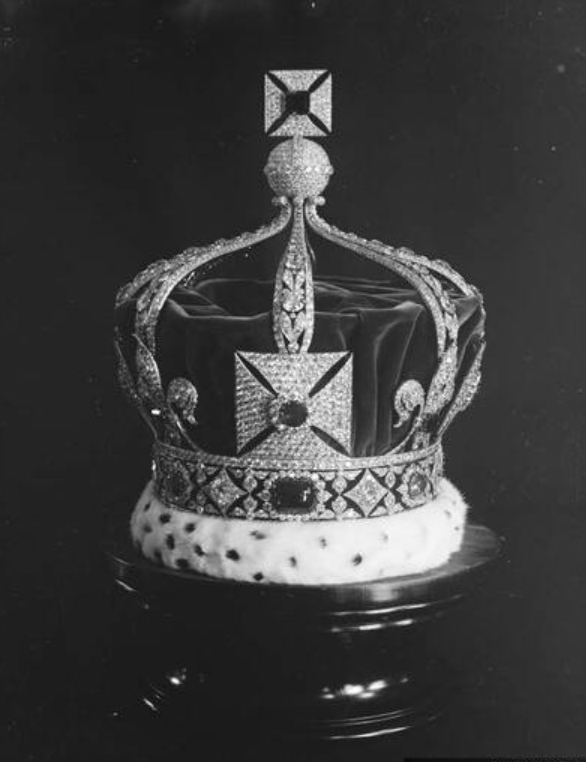
Europeana
GODS MENTIONED:
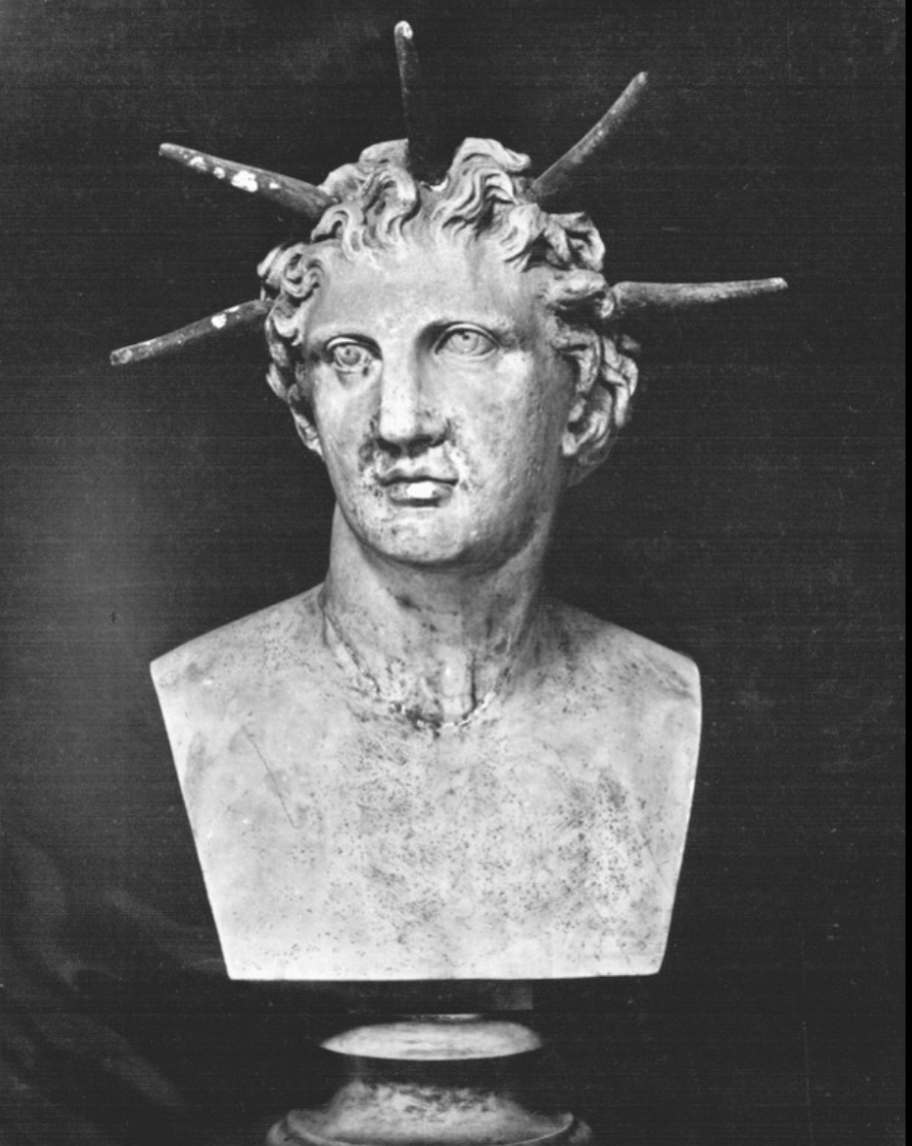
Also known as Helios, is the god of sun.
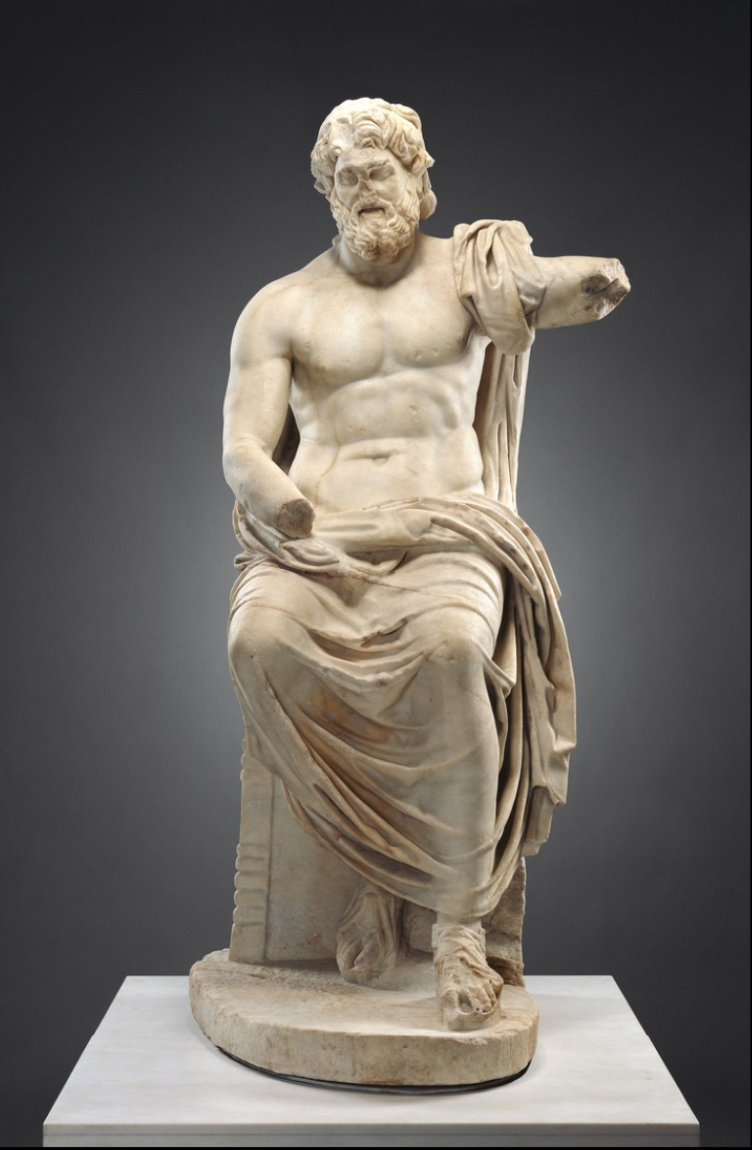
King of the gods and god of sky and thunder.
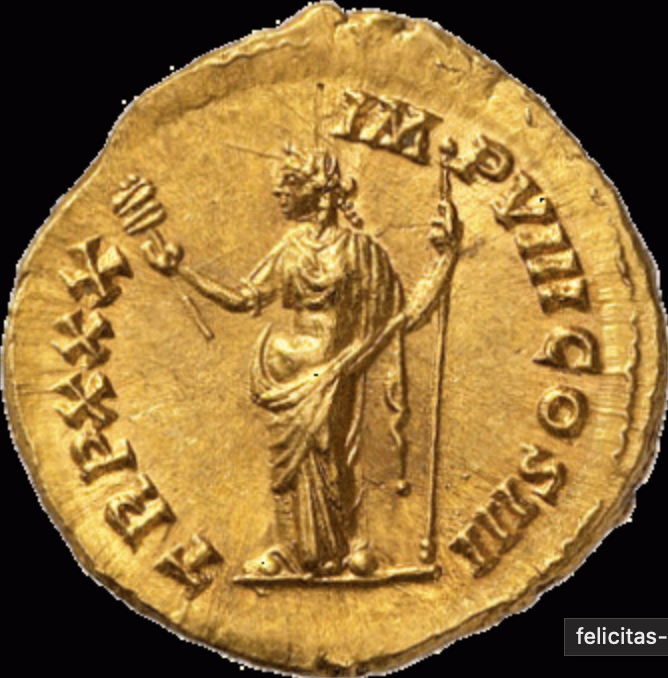
Goddess of good fortune and prosperity.
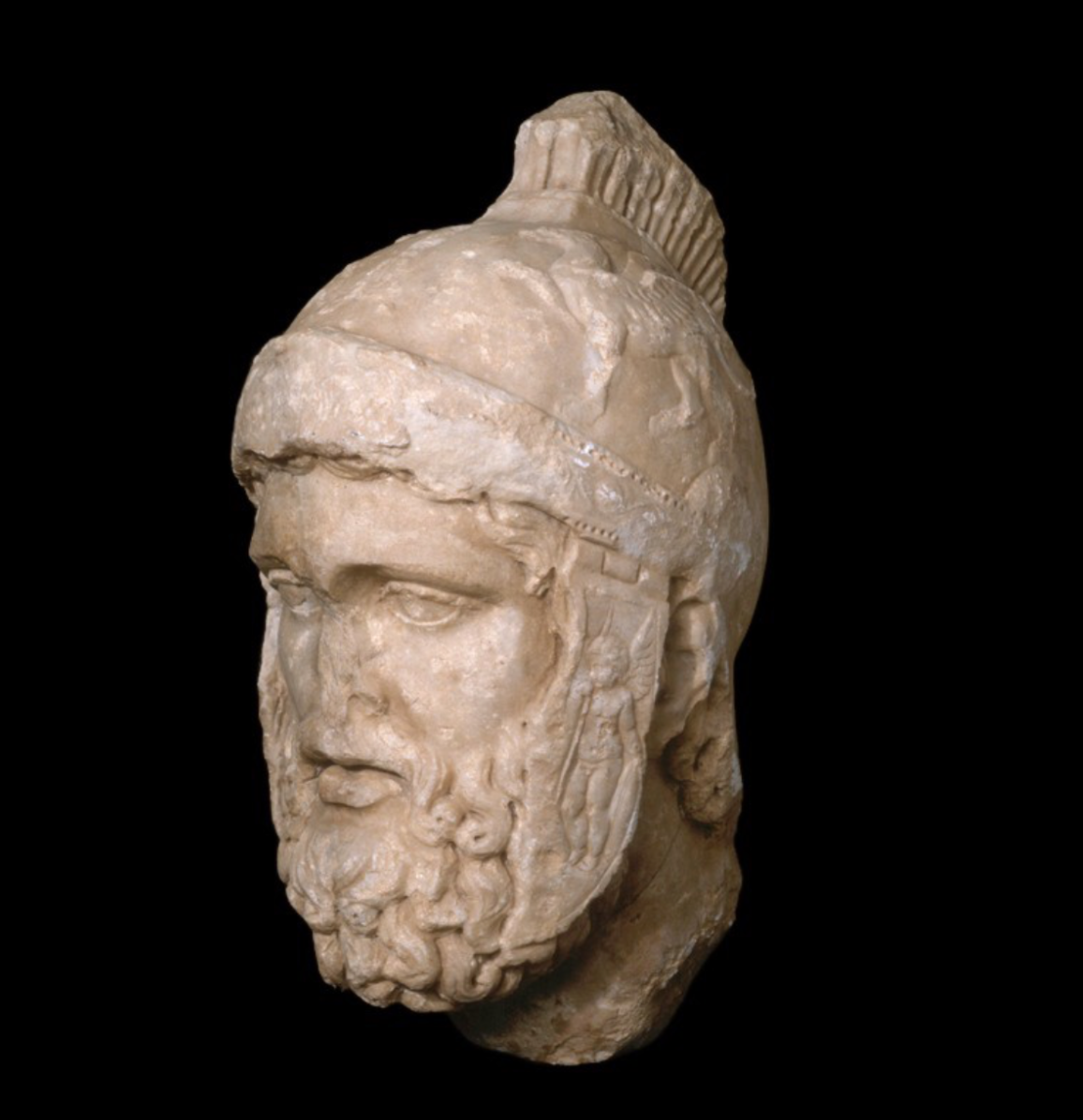
God of war.
Page Completed by Claire Smith, Rhodes College '24
